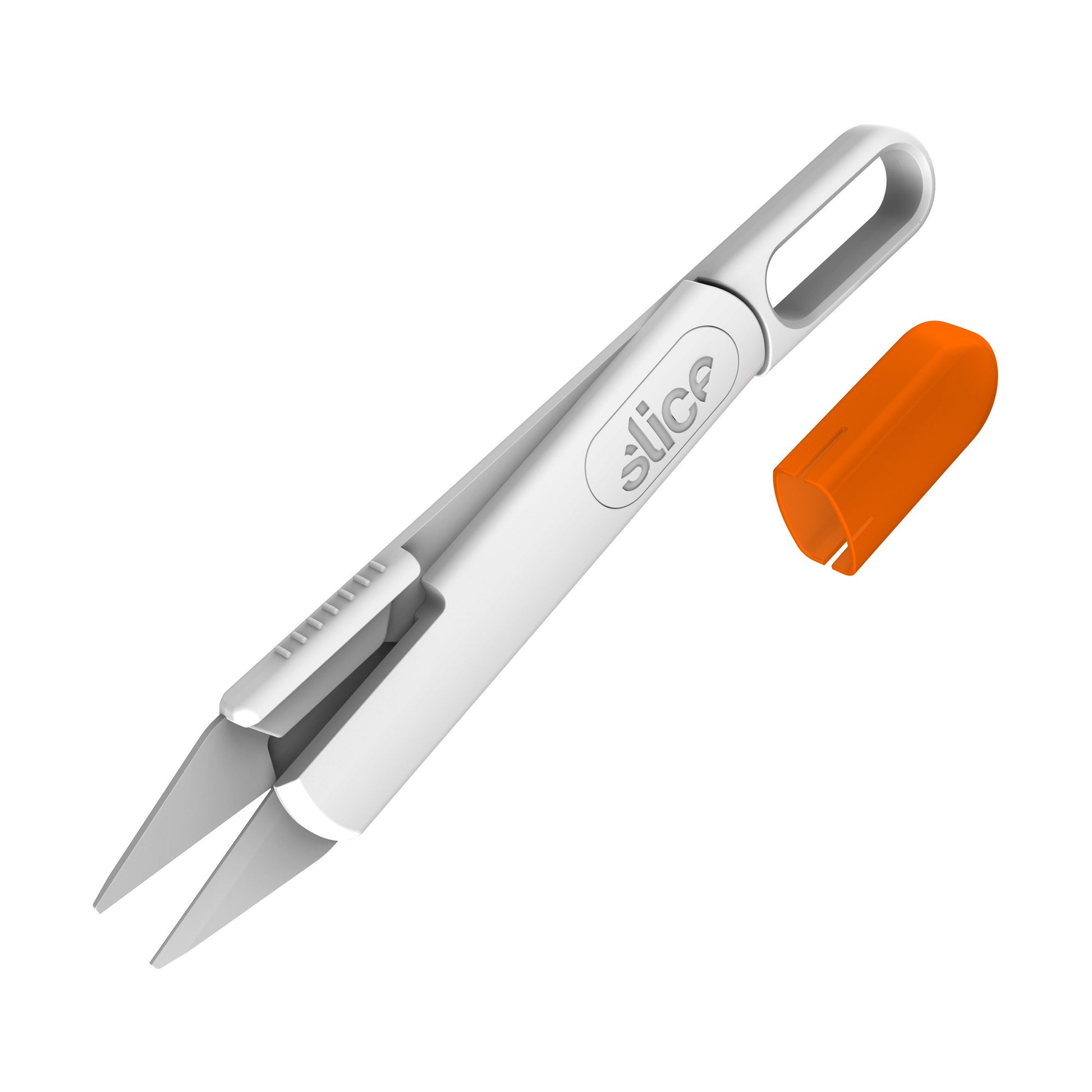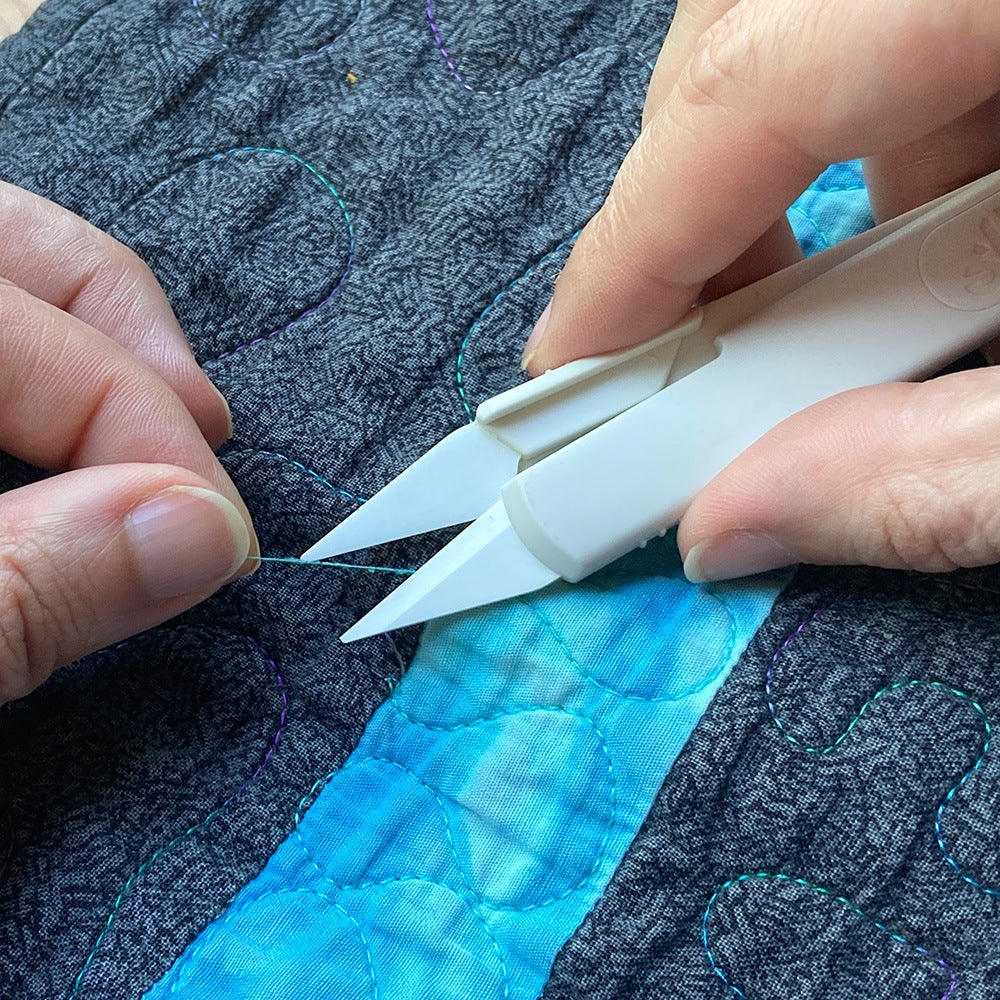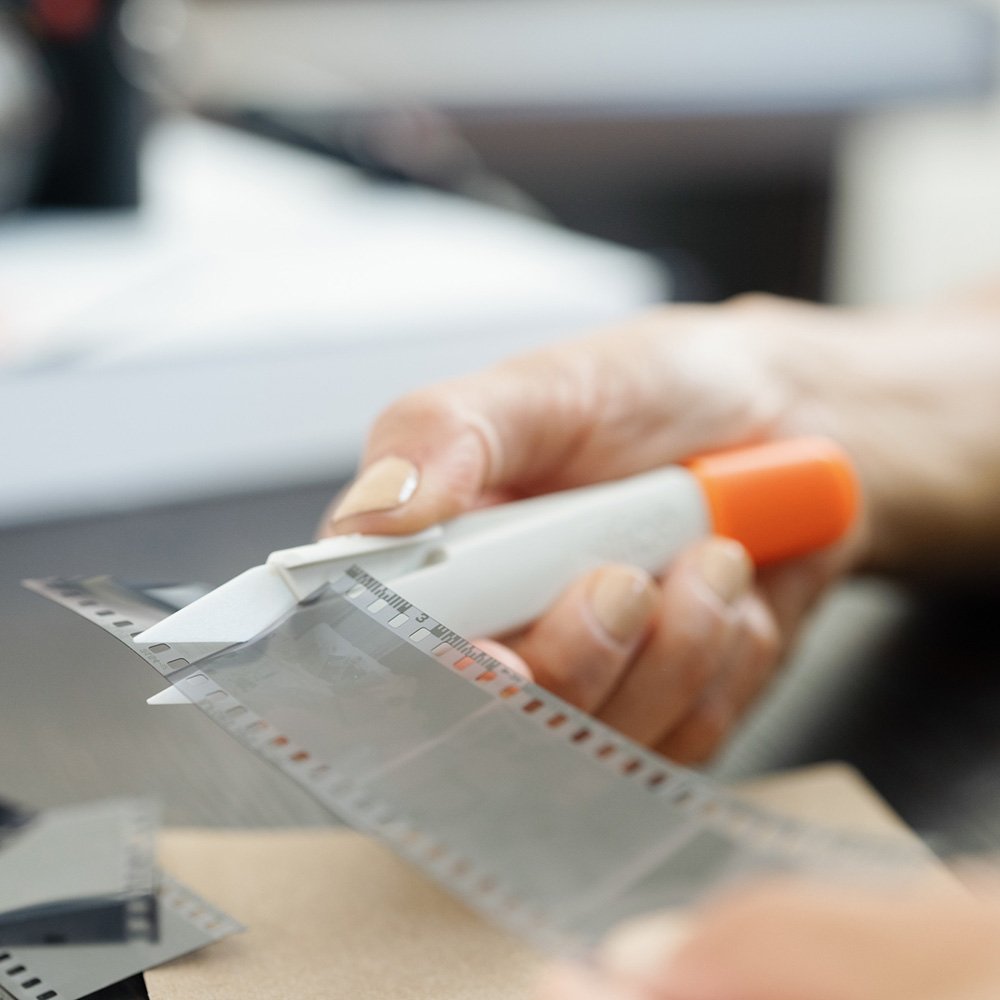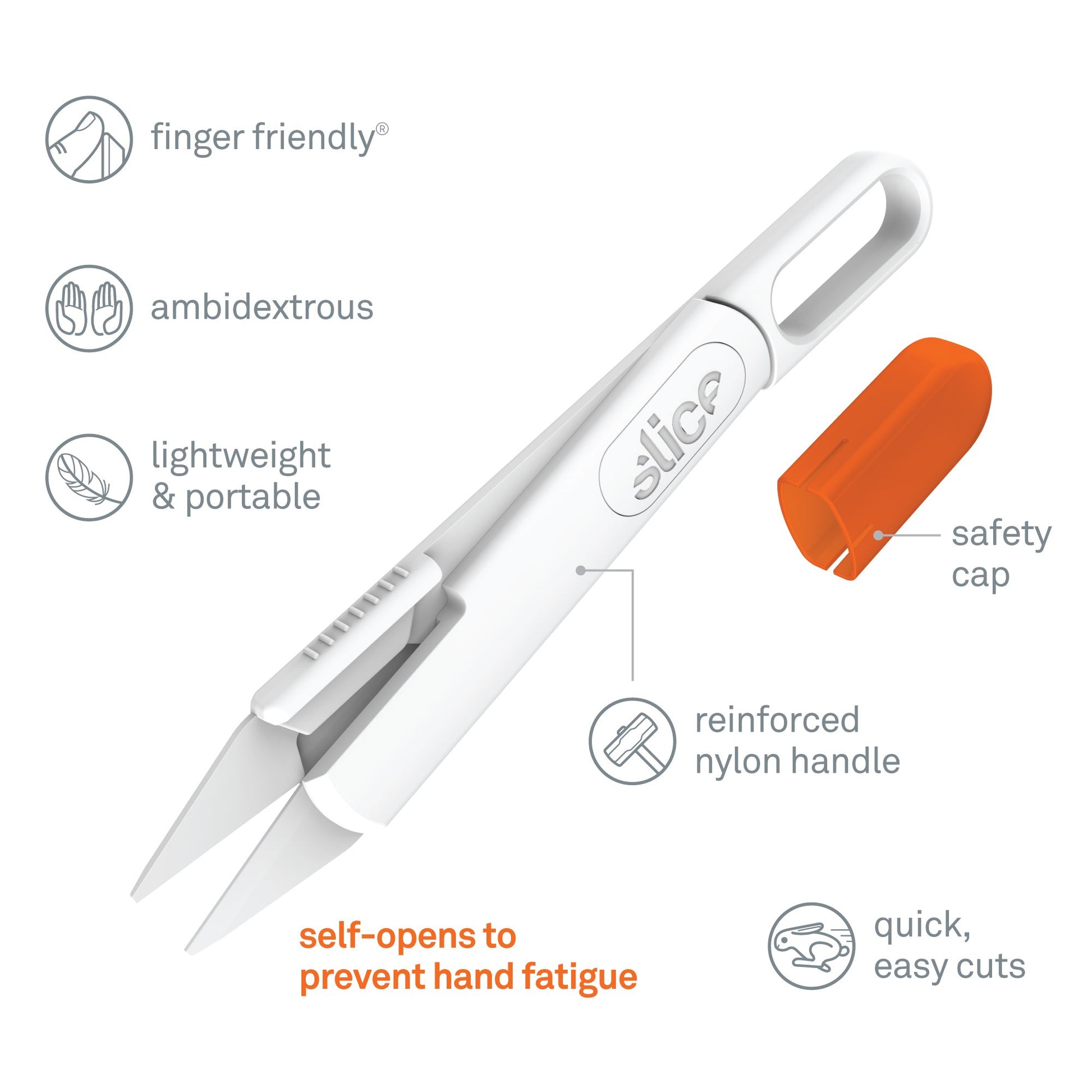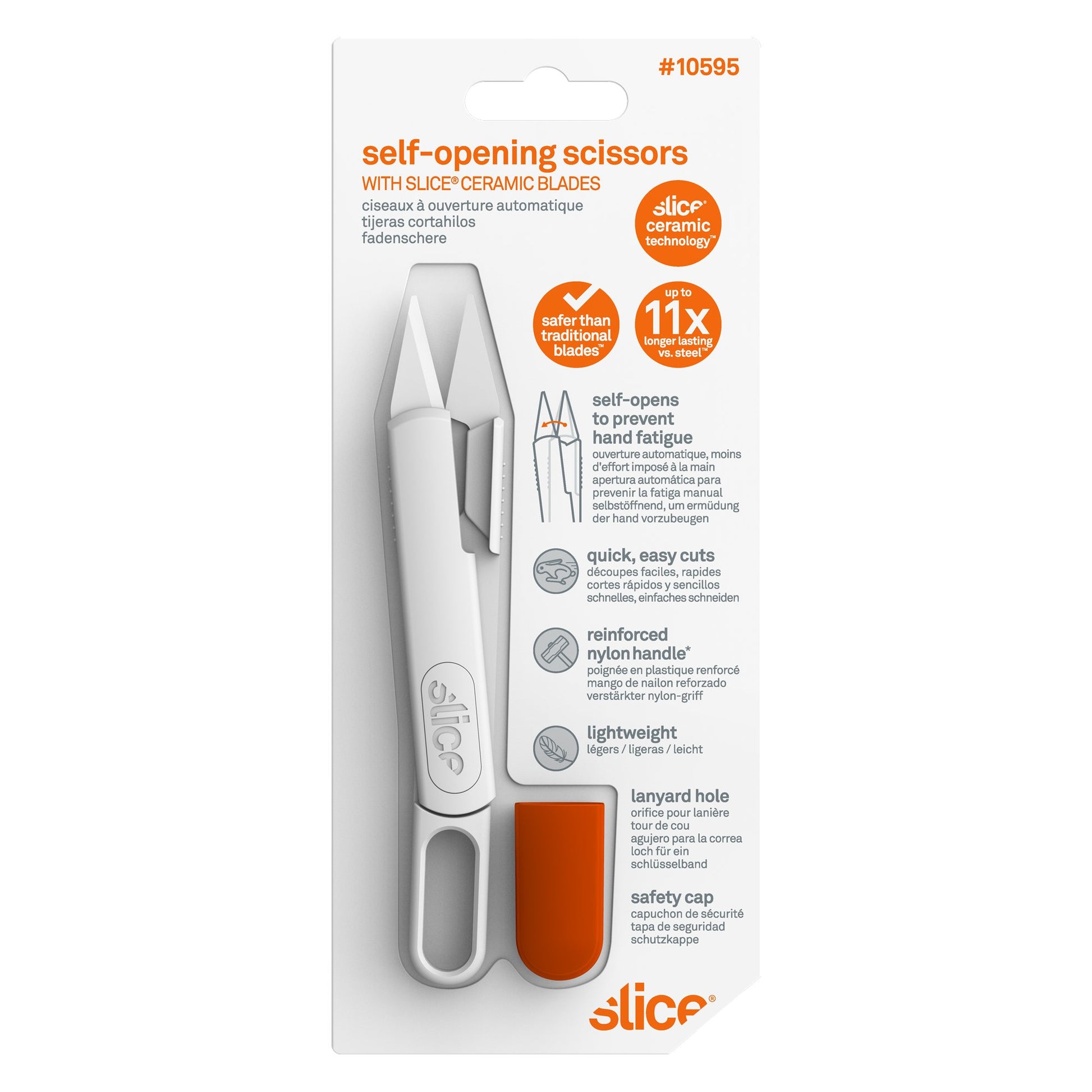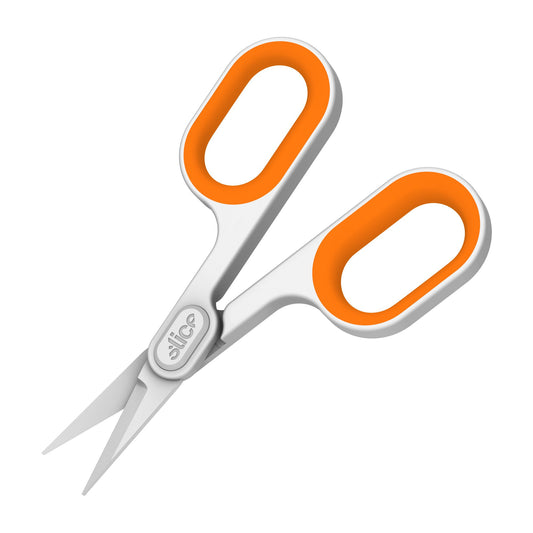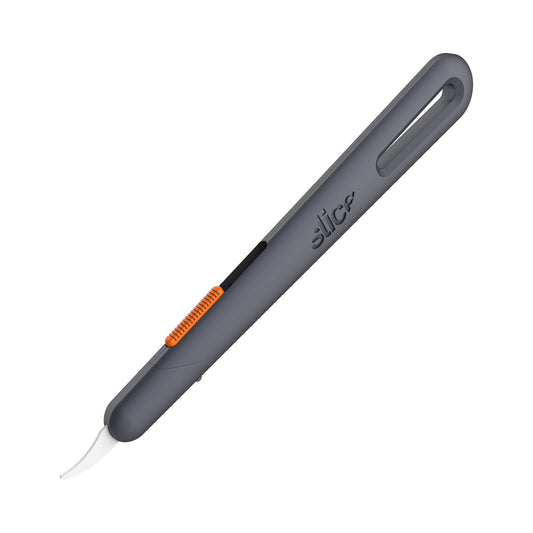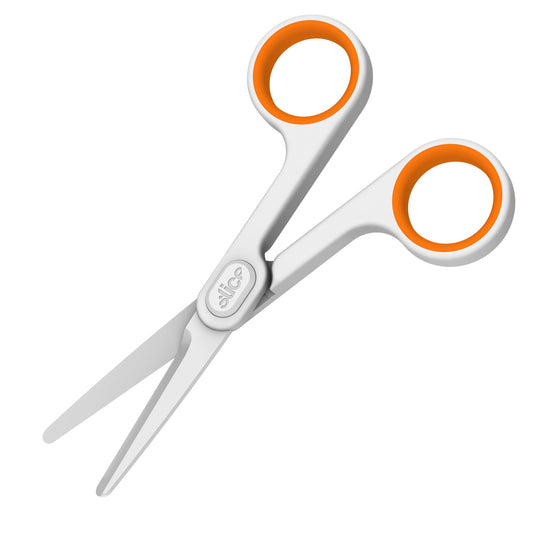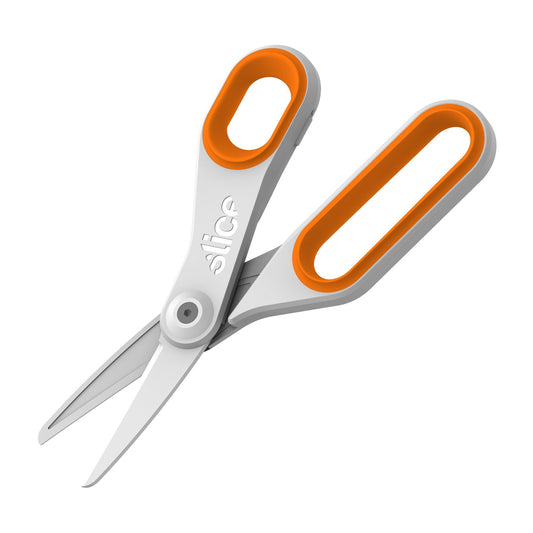Självöppnande sax
SKU #10595
Slice® 10595 Självöppnande sax är lämplig för professionella skräddare och fiberkonstnärer, men också för personer som lider av artrit, fingerfel eller dåligt grepp. Tack vare den självöppnande designen av detta tvåhänta verktyg kan du klippa med bara ett tryck på handtaget, vilket minskar risken för repetitiva belastningar på handen och totalt sett mindre stress på musklerna. Våra blad har en unik Slice-säkerhetskant, så de är säkra att röra och håller upp till 11 gånger längre än stålblad. Som med alla våra säkerhetsblad är dessa olja, smörjmedel och underhållsfria och de rostar aldrig. Dessa eleganta saxar har också ett säkerhetsskydd för att hålla dem stängda när de inte används och ett lanyard hål för att hålla dem i närheten.
- Zirkoniumoxid Slice® säkerhetsblad
- Slitstarka förstärkta nylonhandtag med ribbade grepp
- Säkrare än traditionella saxar
- Finger-friendly® kant som håller 11x längre än metall
- Tvåhänt design
- Reducerar skador, sänker kostnader
- Icke-gnistande, icke-ledande, icke-magnetiska blad
- Kemiskt inerta blad, rostar aldrig
- Olja, smörjmedel och underhållsfria
- BPA-, ftalat- och blyfri sax
- Lätt och kompakt
- SKU # 10595
Great for:
- Snipping thread
- Cutting very thin wire
- Trimming flowers, thin stems and herbs
- Users with dexterity issues
Product Specifications
Product Specifications
Cutting Depth:
Material: PA6+50%GF, PP, stainless steel, zirconium oxide
Dimensions: L x W x H
Weight: 0.08 lb





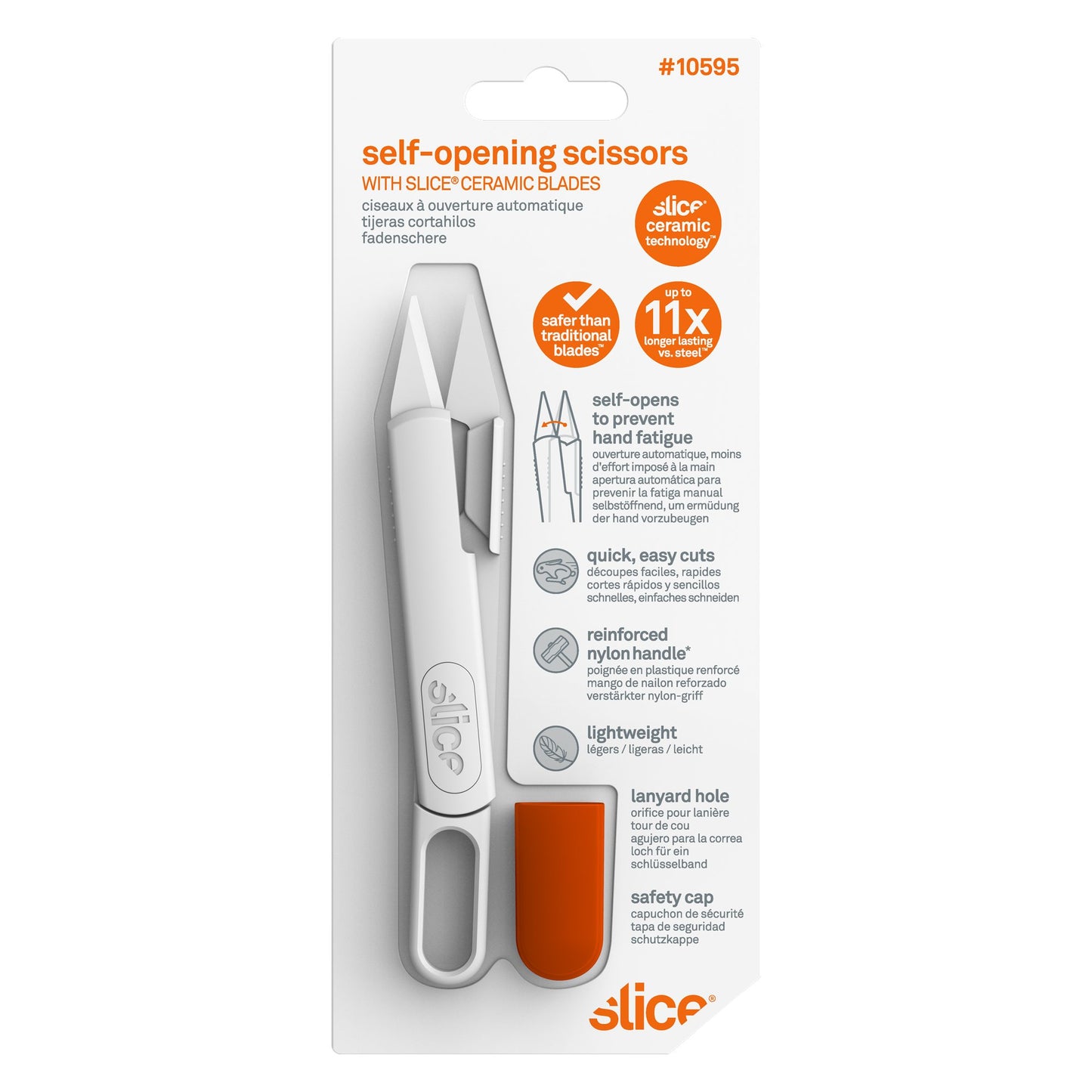
Videos
-
Self-Opening Scissors
-
Safety Scissors: For Adults and Children, Industry and Home
FAQ
What Are Sewing Snips?
Thread snips are open by default. To make the cut, the user squeezes the blades together. There’s no action required to reopen the blades, as an internal spring resets the blades to open once you stop squeezing. The squeezing motion takes place between the thumb and the forefinger, leaving the rest of the fingers out of the equation.
While this may not seem like a large difference, self-opening scissors require different and fewer muscles to operate them, which makes them ideal for repetitive cutting and those who have challenges with their dexterity.
Who Will Benefit From This Design?
Another group of people that benefits from snips for sewing is anyone who has dexterity challenges. This includes children, who are just developing their fine motor skills. It also includes anyone whose mobility is reduced through an acute injury or a chronic condition, such as arthritis, that makes the double action of opening and closing standard scissors too difficult or painful.
What Can I Cut With the 10595 Scissors?
While this tool could certainly handle cutting paper or thin card stock, the blades, at less than one inch long, are quite short, which makes them impractical for longer cuts.
How Are Slice Thread Snips Safer?
Traditional ceramic blades, although they are much harder than steel, are made with the same dangerously sharp grind. This puts the user at risk, especially when dexterity and fine motor control are at issue.
Slice developed a proprietary method of grinding blade edges that shortens the initial cutting zone and disperses the cutting force over materials such as skin. Our blades, including all our ceramic scissors, start at an effective and safe sharpness, and stay there up to 11 times longer than metal blades.

